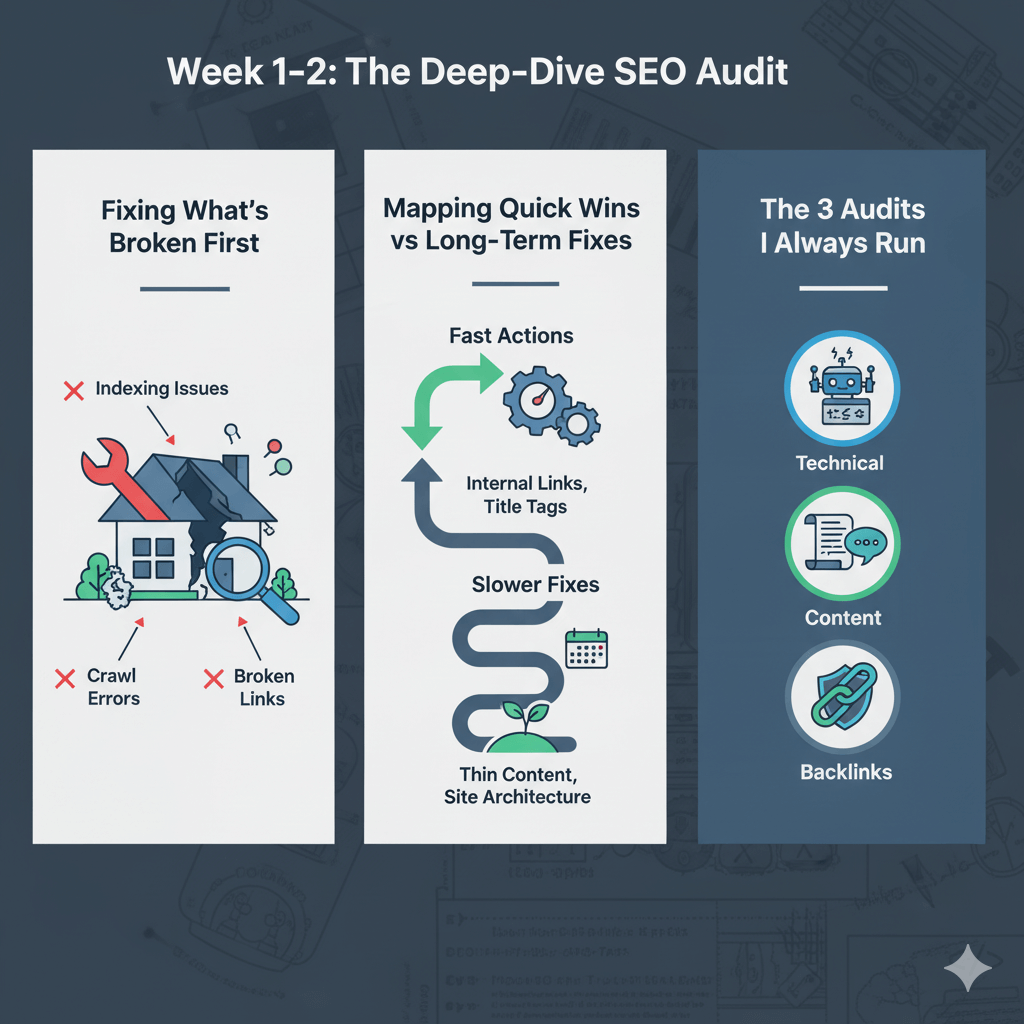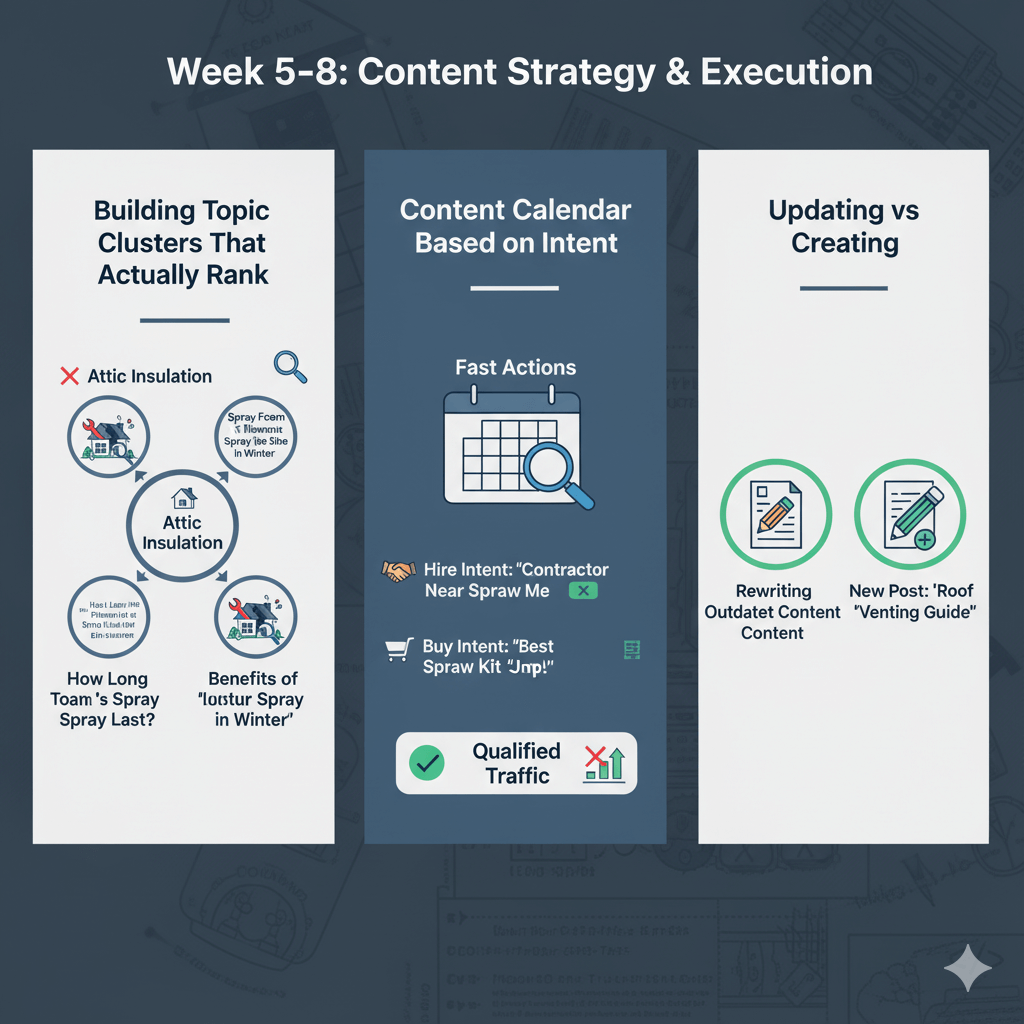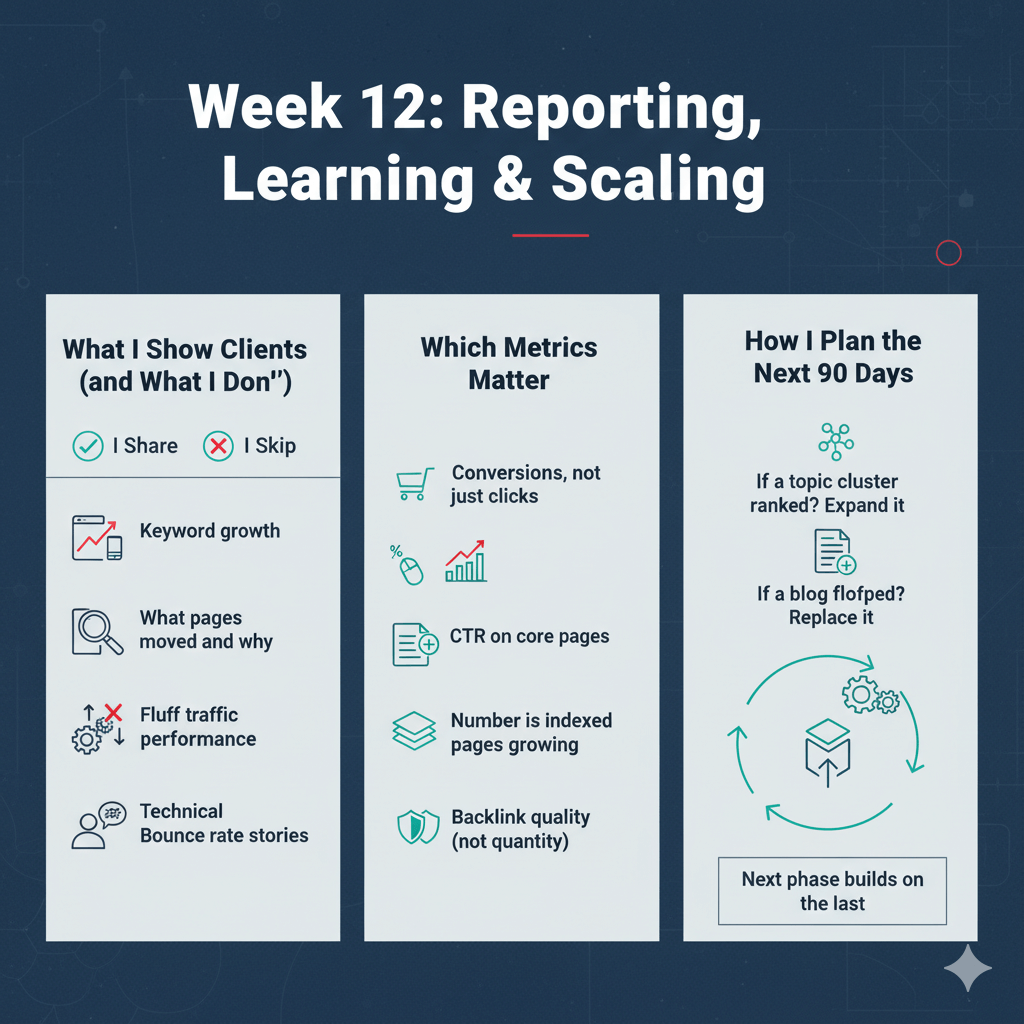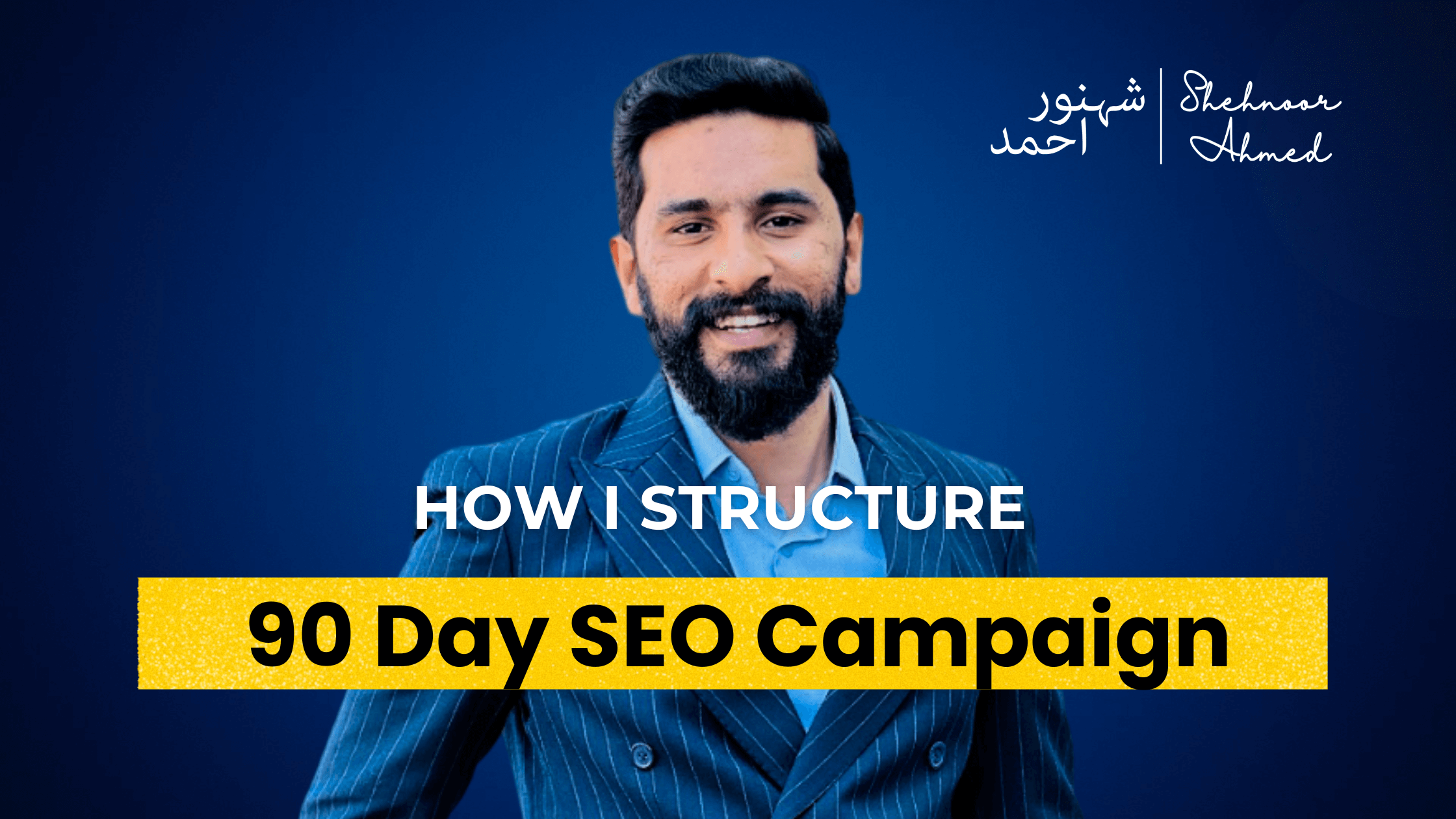A while back, a client looked me dead in the eye and asked,
“So… when do we actually rank?”
No fluff. No patience. Just pressure.
And honestly, I get it. SEO sounds vague to most people. But over time, I stopped trying to sell the dream, and started showing the system.
This is how I run every 90 days SEO campaign. Real stuff. No hacks. No false promises. If you’re a founder, freelancer, or in-house marketer, this is what actually works.
Week 1–2: The Deep-Dive SEO Audit

I don’t start with keywords. I start by figuring out what’s broken.
Fixing What’s Broken First
Before anything else, I ask: Can Google even see this site properly?
That means checking indexing, crawl issues, page speed, broken links, junk pages, everything under the hood.
No point writing new content if Google can’t crawl what’s already there.
Mapping Quick Wins vs Long-Term Fixes
Some things can move rankings fast. Like tightening up internal links or fixing duplicate titles. Others, like fixing thin content or cleaning site architecture, take longer.
So I split them:
- Fast actions for early momentum
- Slower fixes that build long-term trust with search engines
The 3 Audits I Always Run
- Technical – I run crawls with tools like Screaming Frog and Ahrefs
- Content – What’s ranking, what’s dead weight, what needs rewriting
- Backlinks – What’s helping, what’s hurting, what’s missing
Week 3–4: Foundation & Technical SEO
This is the cleanup phase. Before I do anything flashy, I get the core right.
Why I Prioritize Speed, Indexing & Crawlability
If your site takes forever to load or throws indexing errors, nothing else matters.
I’ve seen great blogs buried because the site structure was a mess. No indexing = no rankings.
Cleaning Up the Site Before Scaling
I fix what Googlebot hates:
- Uncompressed images
- Redirect chains
- Broken internal links
- Confusing nav structures
- I don’t touch backlinks or write content until this is done.
Realistic Timelines
Some fixes are fast, like speed optimization. Others, like rebuilding a messy blog structure, take time. Clients need to know that up front.
Week 5–8: Content Strategy & Execution

Now that the site can breathe, I start pushing content. But not just for the sake of it.
Building Topic Clusters That Actually Rank
Instead of chasing random keywords, I group them into themes.
If I’m working on a spray foam contractor site, I might create a cluster like:
- “Attic insulation” (main topic)
- “Spray foam vs fiberglass” (supporting)
- “How long does spray foam last?” (intent-rich blog)
I’ve seen clusters like these drive more qualified traffic than any standalone blog.
Content Calendar Based on Intent
I don’t care about 10K search volume if the intent sucks. I’d rather write five blogs with clear “hire” intent that bring in real leads.
Updating vs Creating
Some of the biggest wins come from rewriting outdated content. If a page ranks on page 2 and has a few backlinks, I refresh it.
One update once helped a client jump from position 17 to 4, no backlinks, just better content.
Week 9–11: Authority Building (Backlinks + EEAT)
The site’s clean. The content’s relevant. Now we build trust.
What Link-Building I Actually Use
I focus on earned backlinks, not fake stuff. That includes:
- Digital PR features
- HARO responses
- Guest posts on industry blogs
- Local citations for service businesses
I avoid anything that looks cheap or automated. Google catches on fast.
Leveraging PR & Collaborations
One time, a client got mentioned on a regional blog. That one link helped five other pages rise in rankings, because the authority passed across the domain.
Building Authority, Not Just Links
It’s not just about domain rating. Google wants expertise.
So we pair every link push with content that proves we know the space, FAQs, in-depth guides, case studies.
Week 12: Reporting, Learning & Scaling

This is where the real test begins. Did all this effort actually pay off?
What I Show Clients (and What I Don’t)
I share:
- Keyword growth (with screenshots, not spreadsheets)
- What pages moved and why
- What changed technically
- Content performance
What I skip: - Fluff traffic from unrelated posts
- Bounce rate stories that don’t lead to action
- Overhyped metrics like DA (unless it’s contextually useful)
Which Metrics Matter
- Conversions, not just clicks
- CTR on core pages
- Number of indexed pages growing
- Backlink quality (not just quantity)
How I Plan the Next 90 Days
Once I’ve seen what worked, I double down.
- If a topic cluster ranked? I expand it.
- If a blog flopped? I analyze and replace.
- If technical issues came back? We re-audit.
- The next phase always starts by building on the last.
You Don’t Just Need SEO: You Need a System
SEO isn’t about magic. It’s about stacking momentum.
Most campaigns don’t fail because of bad ideas, they fail because there’s no clear plan or because expectations were all over the place.
If you want a campaign that doesn’t just rank, but actually brings in business, this system works.
Want help building one that delivers?
Let’s talk. Email me at Hello@shehnoorahmed.com

Comparison Table
| Phase | Focus Area | Key Actions | Common Pitfalls |
|---|---|---|---|
| Week 1–2 | Audit & Prioritization | Technical, content, backlink audits | Trying to fix everything |
| Week 3–4 | Technical SEO | Site speed, indexing, crawl setup | Over-customizing too early |
| Week 5–8 | Content Strategy | Intent-based blogs, updates | Writing for volume, not intent |
| Week 9–11 | Authority Building | Links, PR, trust signals | Buying low-quality links |
| Week 12 | Reporting & Scaling | Learn, double down, optimize | Reporting useless metrics |
Pro Tips
- Don’t guess. Let Google tell you where the site’s weak.
- Clean the technical mess before writing anything.
- Most “content issues” are actually structural problems.
- If a page has links and traffic, update it, don’t start over.
- The best links come from human relationships, not lists.
FAQ
What’s the first thing to fix in an SEO campaign?
Crawlability. If Google can’t reach your content, nothing else works.
How do you manage impatient clients?
Show small wins early. Explain what’s in progress. Don’t overpromise.
When should I focus on content?
Only after the technical base is solid. Otherwise, it’s like building a house on sand.
What tools do you actually use?
Screaming Frog, Ahrefs, GSC, Sitebulb, Surfer (for content audits, not writing).
How do you show progress clearly?
Page-level rankings, traffic with intent, and tracked changes. Visuals help a lot.
What slows campaigns down the most?
Unclear site structure. Also, clients delaying dev changes.
How do you earn trust over time?
Consistency in communication and always tying results to revenue, not just traffic.
Are paid backlinks worth it?
No. They’re short-term, risky, and Google’s getting better at spotting them.
Can SEO work in just 90 days?
Yes; for movement. You won’t dominate the world, but you’ll start seeing traction.
What do you do after 90 days?
Scale what worked. Recheck what didn’t. Adjust goals. Keep going.




